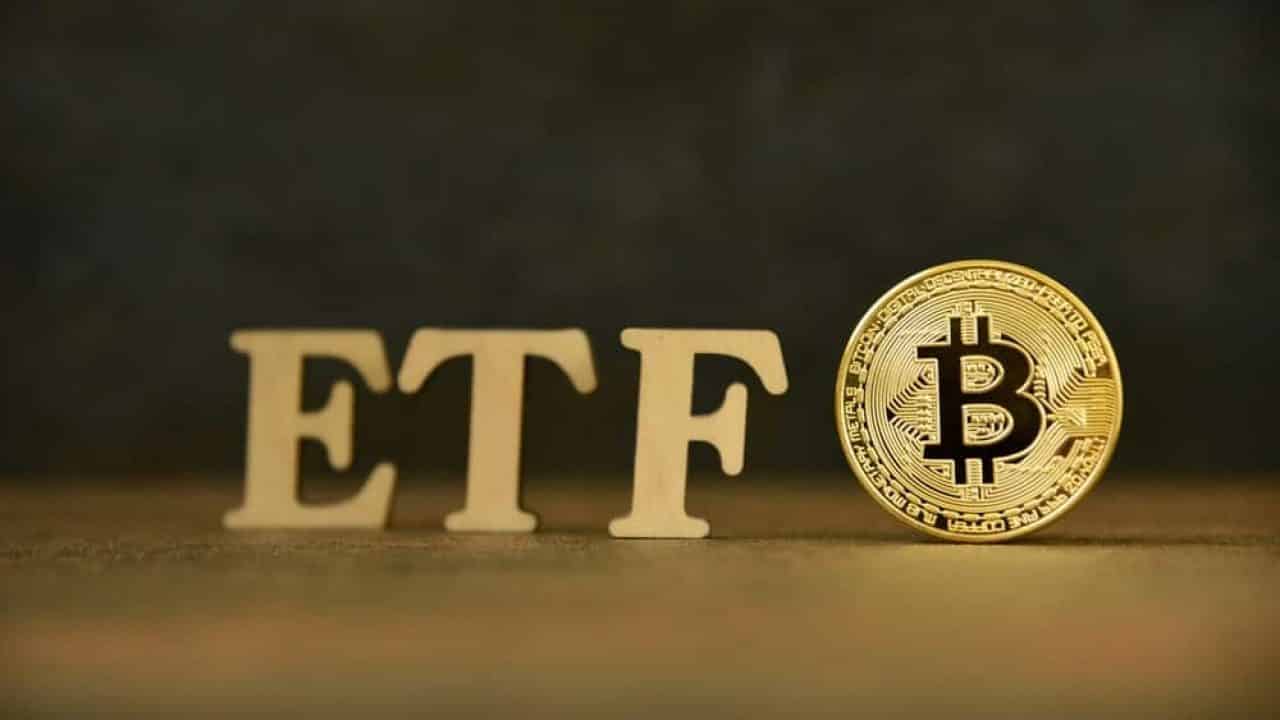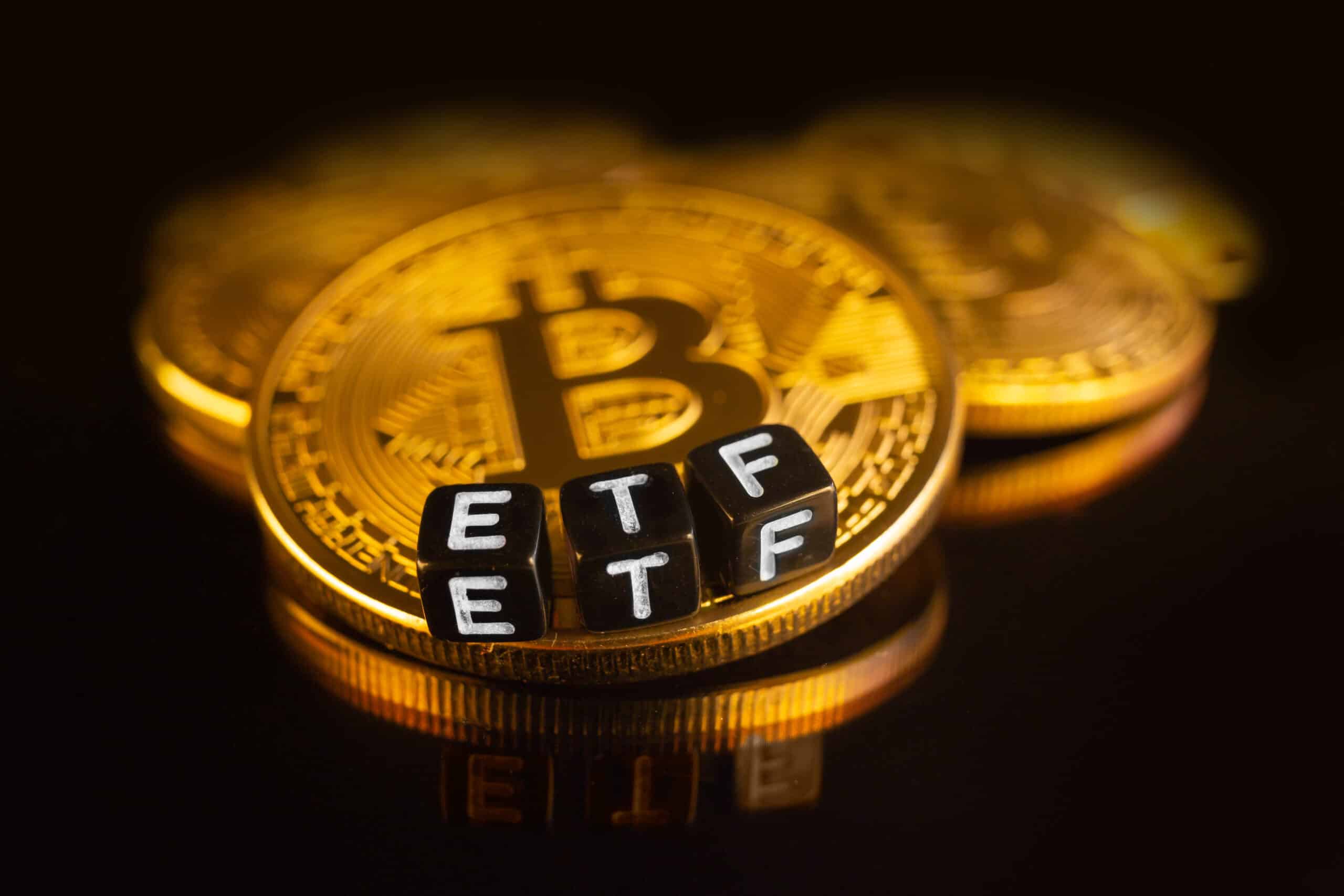What is GBTC?
GBTC, short for Grayscale Bitcoin Trust, is a financial product that allows investors to gain exposure to Bitcoin without actually owning the digital currency directly. It is a regulated investment vehicle that is traded on the OTC (Over the Counter) market, providing a convenient and accessible way for investors to participate in the potential upside of Bitcoin’s value.
The GBTC trust is managed by Grayscale Investments, a trusted and established cryptocurrency asset management company. Grayscale holds a significant amount of Bitcoin in its trust, and investors can purchase shares of GBTC, which represent a fractional ownership of the underlying Bitcoin held by the trust.
One of the key advantages of GBTC is that it allows investors to gain exposure to Bitcoin without having to deal with the complexities of buying, storing, and securing the digital asset themselves. This can be particularly enticing for investors who are new to cryptocurrencies or who prefer a more traditional investment vehicle.
Notably, GBTC shares can be held in tax-advantaged accounts such as Individual Retirement Accounts (IRAs), making it attractive for investors who are seeking Bitcoin exposure within their retirement portfolios.
It is important to note, however, that GBTC operates as a closed-end fund, meaning that the supply of shares is limited and the market price of GBTC may not necessarily reflect the exact value of its underlying Bitcoin holdings. The value of GBTC shares can fluctuate based on supply and demand dynamics, investor sentiment, and market conditions.
Furthermore, GBTC accrues management fees and other expenses, which can impact the overall performance of the investment. These fees are typically higher compared to traditional ETFs or mutual funds.
In summary, GBTC offers investors a regulated and convenient way to gain exposure to Bitcoin without directly owning the digital asset. However, it is important for investors to thoroughly research and understand the dynamics of GBTC, including its fees, market dynamics, and risks, before making an investment decision.
What is Bitcoin?
Bitcoin is a decentralized digital currency that was created in 2009 by an anonymous individual or group of individuals using the pseudonym Satoshi Nakamoto. It is the first and most well-known cryptocurrency, serving as a pioneer in the world of digital currencies.
Unlike traditional fiat currencies such as the US Dollar or Euro, Bitcoin operates on a peer-to-peer network, allowing for direct transactions between users without the need for intermediaries like banks or governments. Bitcoin transactions are recorded on a public ledger known as the blockchain, which ensures transparency and security.
One of the key attributes of Bitcoin is its limited supply. There will only ever be 21 million Bitcoins in existence, resulting in scarcity and potentially increasing the value of the digital currency over time. Bitcoin can be divided into smaller units, with the smallest unit called a “Satoshi,” representing one hundred millionth of a Bitcoin.
Bitcoin is primarily used as a medium of exchange, allowing individuals to send and receive payments globally in a fast, secure, and cost-effective manner. Transactions are verified and confirmed by network participants known as miners, who use computing power to solve complex mathematical problems.
Over the years, Bitcoin has gained widespread acceptance and recognition as a digital store of value and a potential hedge against traditional financial markets. It has become a popular investment choice for individuals and institutions looking to diversify their portfolios and hedge against inflation.
Bitcoin’s value is highly volatile, with significant price fluctuations occurring within short periods. This volatility is driven by various factors, including market demand, regulatory developments, economic news, and investor sentiment. As a result, the price of Bitcoin can experience rapid appreciation or depreciation.
Bitcoin has also paved the way for the development of thousands of other cryptocurrencies, collectively known as altcoins. These alternative digital currencies offer different features and functionalities, aiming to address specific use cases and challenges.
In summary, Bitcoin is a decentralized digital currency that operates on a peer-to-peer network. It enables fast, secure, and low-cost transactions, and its limited supply has contributed to its potential store of value characteristics. As with any investment, individuals seeking to invest in Bitcoin should carefully consider the risks and conduct thorough research before making any investment decisions.
Understanding the Relationship Between GBTC and Bitcoin
The relationship between GBTC (Grayscale Bitcoin Trust) and Bitcoin is crucial to comprehend for investors interested in gaining exposure to the digital currency through GBTC. GBTC is designed to track the performance of Bitcoin’s price, with each share representing a specific amount of Bitcoin. However, it’s important to note that GBTC is not directly tied to the price of Bitcoin and can sometimes trade at a premium or discount compared to the underlying asset.
The price of GBTC is influenced by factors such as supply and demand dynamics in the market, investor sentiment, and the overall liquidity of GBTC shares. When demand for GBTC is high, it can trade at a premium, meaning the price of GBTC is higher than the equivalent Bitcoin value it represents. Conversely, when demand is low, GBTC can trade at a discount, where the price of a share is less than the equivalent Bitcoin value.
This premium or discount can fluctuate over time and is influenced by various market conditions. For example, during periods of high market volatility or when Bitcoin experiences significant price movements, the premium or discount of GBTC may widen. It’s crucial for investors to monitor these fluctuations and understand that the price of GBTC may not always precisely reflect the price of Bitcoin.
Additionally, the supply and demand of GBTC shares can be influenced by factors specific to the trust itself. Grayscale periodically offers new shares of GBTC in private placement offerings, which can impact the price and availability of existing shares in the market. Likewise, Grayscale can also suspend the creation of new shares, limiting the supply and potentially causing GBTC to trade at a premium.
Investors should exercise caution and thoroughly research market conditions and historical price trends before investing in GBTC. While GBTC can provide exposure to Bitcoin, it is essential to understand the premium or discount at which it is trading and assess the potential impact on investment returns.
It’s also worth noting that the relationship between GBTC and Bitcoin is not one-to-one. Each GBTC share does not perfectly represent the value of one Bitcoin due to the management fees and expenses associated with GBTC. Shareholders of GBTC are subject to these fees, which can impact the overall performance of the investment.
In summary, while GBTC aims to track the performance of Bitcoin’s price, it is important for investors to be aware of the potential premium or discount at which GBTC may trade. Thorough research and understanding of the dynamics between GBTC and Bitcoin can help investors make informed investment decisions and manage expectations regarding their investment returns.
How Many GBTC Shares are Equivalent to One Bitcoin?
The number of GBTC shares that are equivalent to one Bitcoin fluctuates and is not a fixed value. This is because the price of GBTC shares can trade at a premium or discount to the underlying value of Bitcoin.
Under normal circumstances, each GBTC share represents a fraction of a Bitcoin. This fraction is determined by dividing the total holdings of Bitcoin in the Grayscale Bitcoin Trust by the total number of outstanding GBTC shares. For example, if the trust holds 10,000 Bitcoins and there are 100,000 GBTC shares, each share would represent 0.1 Bitcoins.
However, it’s important to note that the market price of GBTC shares may deviate from this underlying value. The price can be influenced by various factors, including investor demand, market sentiment, market liquidity, and the overall supply of GBTC shares.
In some cases, GBTC shares may trade at a premium, meaning the market price of a share is higher than the equivalent Bitcoin value it represents. This premium can occur when there is high demand for GBTC shares, potentially due to limited availability or investor sentiment. On the other hand, GBTC shares can also trade at a discount, where the market price is lower than the equivalent Bitcoin value.
The premium or discount can vary over time and can be influenced by market conditions and investor perception. It’s crucial for investors to monitor these fluctuations and assess the potential impact on their investment returns.
Additionally, it’s important to note that GBTC shares accrue management fees and other expenses, which can further impact the overall value of the investment compared to directly holding Bitcoin. These fees are typically higher than those associated with traditional ETFs or mutual funds.
Given the dynamic nature of GBTC and its potential for trading at a premium or discount, it’s prudent for investors to conduct thorough research and carefully consider the premium or discount at which GBTC is trading before making any investment decisions. Awareness of the ratio between GBTC shares and Bitcoin value and market conditions can help investors better understand the relationship between the two.
In summary, the number of GBTC shares equivalent to one Bitcoin is not fixed due to the potential for GBTC to trade at a premium or discount. Understanding market conditions, investor sentiment, and the impact of management fees is crucial for assessing the relationship and making informed investment decisions.
Factors Affecting the GBTC to Bitcoin Ratio
The ratio between GBTC (Grayscale Bitcoin Trust) and Bitcoin can be influenced by several factors. Understanding these factors can provide insights into the dynamics and potential fluctuations in the GBTC to Bitcoin ratio.
1. Supply and Demand: The supply and demand for GBTC shares can greatly impact the GBTC to Bitcoin ratio. When the demand for GBTC shares exceeds the available supply, it can lead to the shares trading at a premium compared to the underlying Bitcoin value. Conversely, if the demand is low, GBTC shares may trade at a discount.
2. Investor Sentiment: Investor sentiment towards Bitcoin and digital assets, in general, can influence the GBTC to Bitcoin ratio. Positive sentiment and increased investor confidence in Bitcoin’s long-term prospects may result in GBTC trading at a premium as demand for shares increases.
3. Market Volatility: The volatility of the cryptocurrency market can impact the GBTC to Bitcoin ratio. During periods of high market volatility, significant price fluctuations in Bitcoin can affect the demand for GBTC shares, potentially resulting in widening or narrowing of the premium or discount.
4. Market Liquidity: The level of market liquidity for GBTC shares can impact the GBTC to Bitcoin ratio. Higher liquidity allows for smoother buying and selling of shares, reducing the potential for wide deviations from the underlying Bitcoin value.
5. Economic Factors: Broader economic factors, such as interest rates, inflation expectations, and geopolitical events, can indirectly impact the GBTC to Bitcoin ratio. Changes in these factors may influence investor behavior and sentiment towards Bitcoin and digital assets, affecting the demand for GBTC shares.
6. Management Fees: GBTC charges management fees and other expenses, which can affect the GBTC to Bitcoin ratio over time. These fees are deducted from the underlying Bitcoin holdings of the trust, potentially reducing the value of each GBTC share in relation to the Bitcoin it represents.
It’s crucial for investors to consider these factors and conduct thorough research before making any investment decisions. Monitoring market conditions, investor sentiment, and understanding the potential impact of fees can help investors better assess the GBTC to Bitcoin ratio and its implications.
In summary, the ratio between GBTC and Bitcoin is influenced by factors such as supply and demand dynamics, investor sentiment, market volatility, liquidity, economic factors, and management fees. By considering these factors, investors can gain a better understanding of the potential fluctuations in the GBTC to Bitcoin ratio and make informed investment decisions.
Impact of Market Conditions on the GBTC to Bitcoin Ratio
The GBTC (Grayscale Bitcoin Trust) to Bitcoin ratio can be influenced by various market conditions. Understanding these market conditions is crucial for investors looking to assess the dynamics between GBTC and Bitcoin and anticipate potential changes in the ratio.
1. Market Volatility: The volatility of the cryptocurrency market can significantly impact the GBTC to Bitcoin ratio. Periods of high market volatility can lead to increased demand for GBTC shares as investors seek exposure to Bitcoin without directly owning it. This heightened demand can cause GBTC to trade at a premium compared to the underlying Bitcoin value.
2. Bitcoin Price Movements: The price movements of Bitcoin can also affect the GBTC to Bitcoin ratio. When Bitcoin experiences significant price increases, the demand for GBTC may surge, potentially resulting in GBTC trading at a premium. Conversely, if Bitcoin’s price declines sharply, it may lead to a decrease in the demand for GBTC shares, potentially causing GBTC to trade at a discount.
3. Market Sentiment: Investor sentiment towards Bitcoin and the overall outlook for the cryptocurrency market can impact the GBTC to Bitcoin ratio. Positive sentiment and optimism regarding Bitcoin’s future prospects may increase demand for GBTC shares and potentially drive GBTC to a premium. Conversely, negative sentiment can dampen demand, potentially leading to GBTC trading at a discount.
4. Market Liquidity: The level of liquidity in the market can influence the GBTC to Bitcoin ratio. Higher liquidity often results in smoother buying and selling of GBTC shares, reducing the potential for large deviations from the underlying Bitcoin value. Conversely, lower liquidity can lead to wider spreads between the market price of GBTC and the value of the Bitcoin it represents.
5. Overall Market Conditions: Broader market conditions, such as economic factors, regulatory developments, and geopolitical events, can impact the GBTC to Bitcoin ratio. Favorable market conditions, such as increased institutional adoption or positive regulatory news, can bolster investor confidence and drive GBTC to trade at a premium. Conversely, adverse market conditions can result in decreased investor demand and potential discounts for GBTC shares.
Monitoring these market conditions can provide valuable insights into potential fluctuations in the GBTC to Bitcoin ratio. However, it’s important to note that market conditions are dynamic and can change rapidly. Investors should conduct thorough research, stay informed of current market developments, and understand that the GBTC to Bitcoin ratio can be subject to significant shifts affected by multiple factors.
In summary, market conditions, including volatility, Bitcoin price movements, market sentiment, liquidity, and overall market conditions, can impact the GBTC to Bitcoin ratio. By closely monitoring these conditions, investors can better anticipate changes and make informed decisions regarding their investments in GBTC.
Importance of Research and Due Diligence
When considering an investment in GBTC (Grayscale Bitcoin Trust) or any other financial product, conducting thorough research and due diligence is of utmost importance. It allows investors to make informed decisions and mitigate potential risks. Here are key reasons why research and due diligence are vital:
1. Understanding the Product: Research provides a deeper understanding of GBTC, its structure, and how it operates. By studying the trust’s prospectus, financial statements, and other available information, investors can gain insights into the potential risks, fees, and structure of GBTC shares.
2. Evaluating the Market: Research helps investors assess the market conditions and dynamics that can impact the price of GBTC shares and its relationship to Bitcoin. Monitoring market trends, investor sentiment, and regulatory developments can provide valuable insights into the potential risks and opportunities associated with GBTC.
3. Assessing Risk-Reward Potential: Through research, investors can evaluate the risk-reward potential of investing in GBTC. Understanding the historical performance, volatility, and potential factors that can influence the GBTC to Bitcoin ratio enables investors to make informed decisions aligned with their investment objectives and risk appetite.
4. Comparing Alternatives: Research allows investors to compare GBTC against other investment options available for gaining exposure to Bitcoin or the cryptocurrency market. By exploring alternatives such as direct ownership of Bitcoin, other cryptocurrency investment products, or even traditional investment vehicles, investors can make more well-rounded investment choices.
5. Long-Term Suitability: By conducting due diligence, investors can determine if GBTC aligns with their long-term investment goals and strategies. Factors such as investment horizon, risk tolerance, and portfolio diversification should be evaluated to ensure that the investment in GBTC fits within the broader investment plan.
6. Evaluating Fees and Expenses: Researching the fees and expenses associated with GBTC is crucial. Investors should understand the management fees, administrative costs, and potential tax implications. Evaluating the impact of these fees on the overall investment return is important for making informed decisions.
7. Staying Informed: Financial markets and the cryptocurrency industry are constantly evolving. Ongoing research and staying informed about industry news, regulatory changes, and advancements in technology help investors adapt to changing market conditions and make timely investment decisions.
In summary, conducting research and due diligence is essential for investors considering an investment in GBTC or any other financial product. It helps investors understand the product, assess market conditions, evaluate risk-reward potential, compare alternatives, determine long-term suitability, evaluate fees, and stay informed. By dedicating time to thorough research and due diligence, investors can make more informed investment decisions and navigate the dynamic cryptocurrency market with greater confidence.
How to Calculate the GBTC to Bitcoin Ratio?
The GBTC (Grayscale Bitcoin Trust) to Bitcoin ratio represents the relationship between the market price of GBTC shares and the value of Bitcoin they represent. While the ratio fluctuates due to market dynamics, calculating it can provide investors with insights into the potential premium or discount of GBTC compared to Bitcoin.
To calculate the GBTC to Bitcoin ratio, follow these steps:
1. Obtain the market price of GBTC: The market price is the current trading price of GBTC shares. This information can be obtained from financial websites, brokerage platforms, or market data providers.
2. Determine the NAV per share: The Net Asset Value (NAV) per share represents the underlying Bitcoin value of each GBTC share. Grayscale provides the daily NAV through their official website or other financial data sources. Divide the NAV by the total number of outstanding shares to find the NAV per share.
3. Calculate the ratio: Divide the market price of GBTC by the NAV per share. The resulting value represents the ratio of GBTC to Bitcoin. For example, if the market price of GBTC is $12 and the NAV per share is $10, the ratio would be 1.2. This suggests that GBTC is trading at a 20% premium to the value of Bitcoin it represents.
It is important to note that the calculated ratio should be interpreted cautiously, as it represents the situation at a specific point in time and may not reflect the ongoing market dynamics. GBTC’s market price can vary due to factors such as supply and demand, investor sentiment, and market liquidity.
Additionally, the GBTC ratio can experience fluctuations and may deviate from the underlying Bitcoin value due to factors such as management fees and expenses associated with GBTC. These fees can impact the overall value of each GBTC share relative to the Bitcoin it represents.
In summary, to calculate the GBTC to Bitcoin ratio, find the market price of GBTC and the Net Asset Value (NAV) per share. Divide the market price by the NAV per share to derive the ratio. However, it is important to remember that the market price of GBTC can vary due to market dynamics and associated fees, so caution should be exercised when interpreting the ratio.
Benefits and Drawbacks of Investing in GBTC
Investing in GBTC (Grayscale Bitcoin Trust) offers both benefits and drawbacks that investors should consider before making an investment decision.
Benefits:
1. Convenient Bitcoin Exposure: GBTC provides investors with exposure to Bitcoin without the need to directly own and manage the digital asset. This can be appealing for those who are new to cryptocurrencies or prefer a more traditional investment vehicle.
2. Tax-Advantaged Accounts: GBTC shares can be held in tax-advantaged accounts such as Individual Retirement Accounts (IRAs), allowing investors to gain Bitcoin exposure within their retirement portfolios while potentially receiving tax benefits.
3. Liquidity: GBTC shares are traded on the OTC (Over the Counter) market, offering investors relatively easy access to buying and selling shares. This liquidity can provide flexibility in managing investments.
4. Regulated and Transparent: As a regulated investment vehicle, GBTC provides a level of transparency and accountability to investors. Regular financial reporting and disclosure requirements help investors make informed decisions.
Drawbacks:
1. Premium or Discount: GBTC shares can trade at a premium or discount to the value of the underlying Bitcoin. During periods of high demand or low supply, GBTC may trade at a premium, potentially resulting in investors paying more than the actual value of Bitcoin. Conversely, GBTC may trade at a discount during times of low demand or high supply.
2. Fees and Expenses: GBTC charges management fees and other expenses, which can erode the overall return on investment. These fees can be higher compared to other traditional investment vehicles, such as ETFs or mutual funds.
3. Market Price Deviation: The market price of GBTC may not always precisely track the underlying Bitcoin value. Factors such as supply and demand dynamics, investor sentiment, and market conditions can result in deviations between the market price and the actual value of Bitcoin.
4. No Direct Ownership: When investing in GBTC, investors do not own the underlying Bitcoin directly. This means they do not hold the private keys and cannot independently control or transfer the Bitcoin, relying on the management of GBTC for custody.
5. Market Volatility: Like any investment in the cryptocurrency market, GBTC is subject to significant price volatility. The value of GBTC shares can be influenced by factors such as Bitcoin price movements, market sentiment, and regulatory developments, potentially resulting in substantial gains or losses.
Before investing in GBTC or any other financial product, individuals should conduct thorough research, evaluate their investment objectives and risk tolerance, and carefully consider the benefits and drawbacks associated with GBTC to make an informed investment decision aligned with their financial goals.
Conclusion
GBTC (Grayscale Bitcoin Trust) offers investors a regulated and convenient way to gain exposure to Bitcoin without directly owning the digital asset. It provides benefits such as convenient Bitcoin exposure, the ability to hold shares in tax-advantaged accounts, liquidity, and regulatory transparency.
However, investing in GBTC comes with certain drawbacks. GBTC shares can trade at a premium or discount to the value of the underlying Bitcoin, fees and expenses can impact overall returns, and market price deviation from the actual value of Bitcoin can occur. Additionally, investors should be mindful of market volatility and the fact that GBTC does not offer direct ownership of the underlying Bitcoin.
To make informed investment decisions regarding GBTC, thorough research and due diligence are crucial. Understanding GBTC’s structure, evaluating market conditions, assessing risk-reward potential, and comparing alternatives enable investors to better navigate the dynamics between GBTC and Bitcoin. Additionally, monitoring the GBTC to Bitcoin ratio and staying informed of market developments can provide valuable insights.
Investing in GBTC or any other financial product requires careful consideration of individual investment goals, risk tolerance, and market conditions. It is advisable to consult with a qualified financial advisor to assess suitability and develop a comprehensive investment strategy.
By taking a proactive approach to research and due diligence, investors can make informed decisions and navigate the cryptocurrency market with greater confidence. Understanding both the benefits and drawbacks of investing in GBTC is essential for achieving long-term investment objectives and managing potential risks.

























